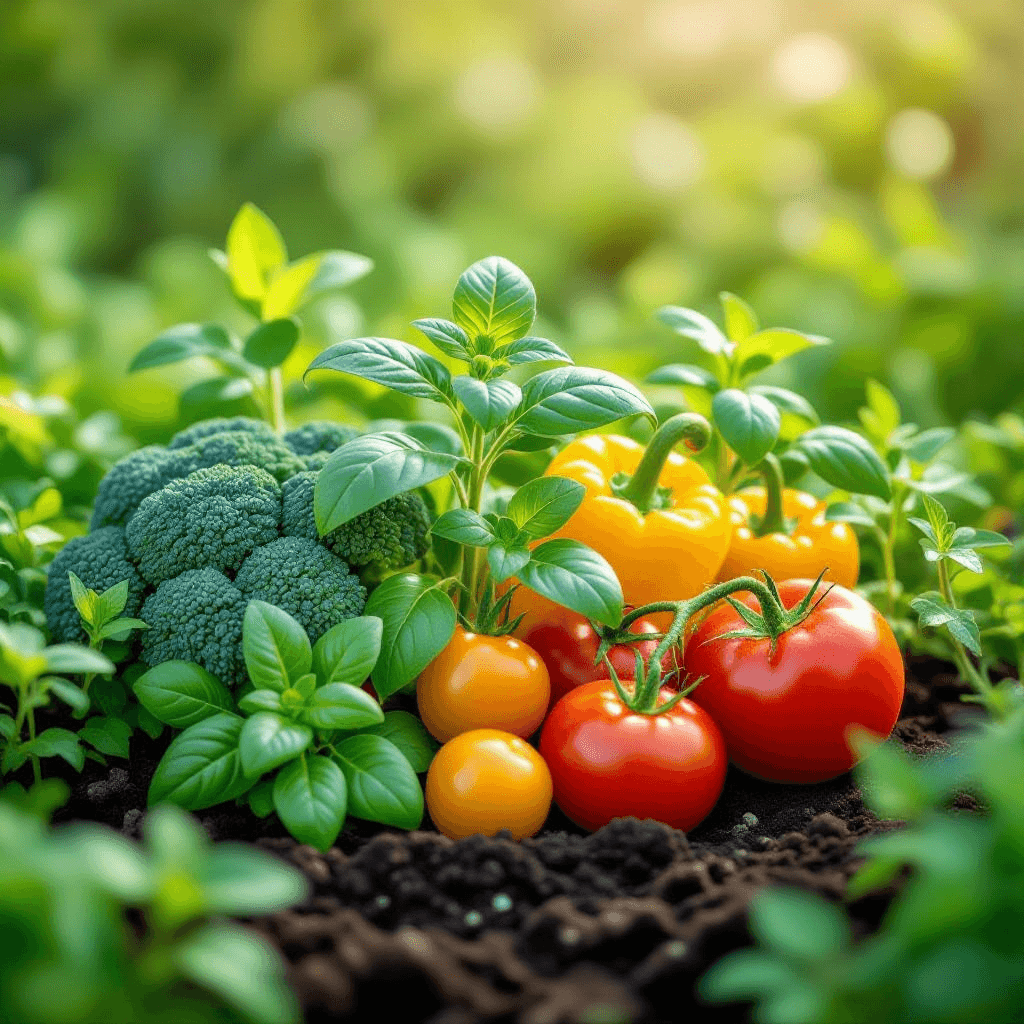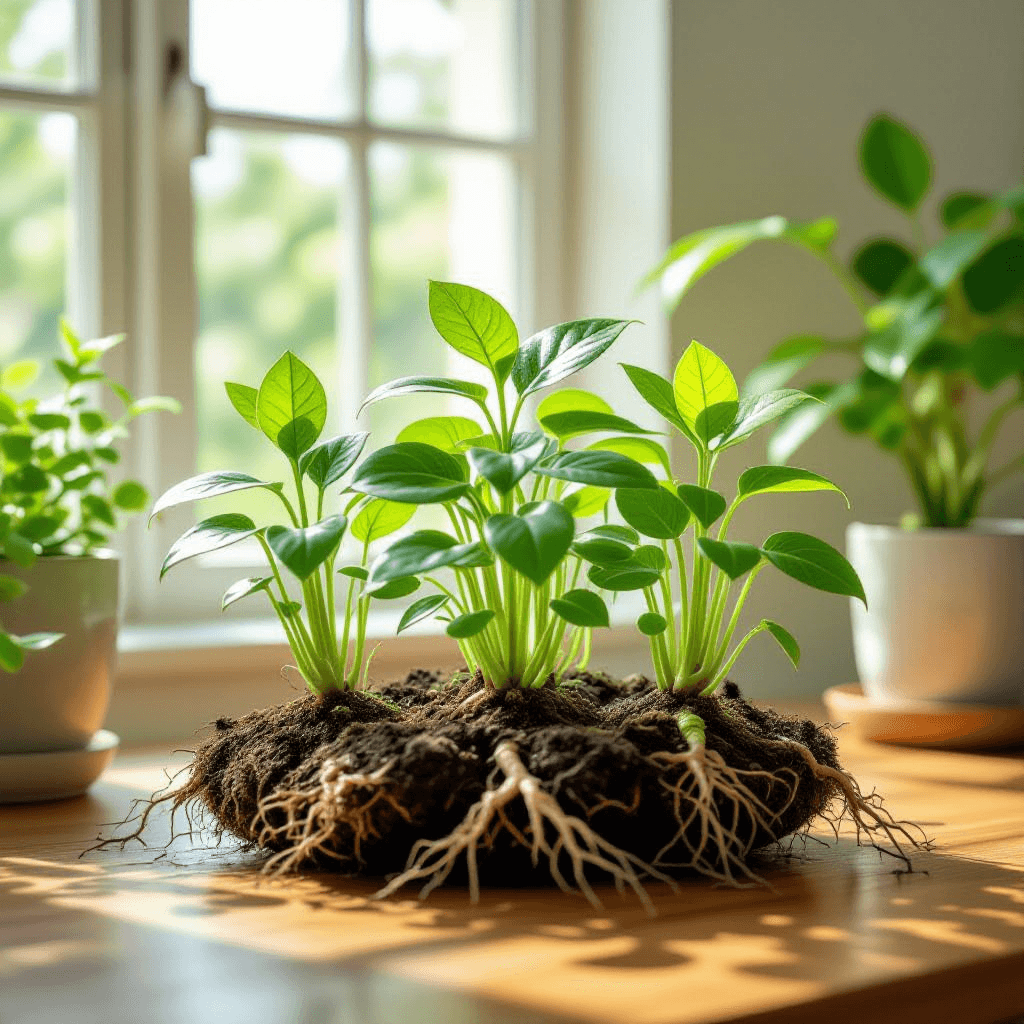Understanding Companion Planting
Companion planting is a horticultural practice that involves the strategic pairing of different plant species to enhance their growth, health, and productivity. This method has ancient roots, dating back thousands of years when early civilizations observed the symbiotic relationships between plants. Cultivators recognized that certain plants could thrive together, promoting not only individual plant vigor but also overall garden health.
The principles behind companion planting are based on a variety of beneficial interactions. For example, some plants can deter pests that may threaten their neighbors, while others may attract beneficial insects, such as pollinators or predatory species that feed on harmful pests. This natural pest control is a cornerstone of sustainable gardening practices, reducing the need for chemical interventions and promoting biodiversity.
In addition to pest management, companion planting also plays a significant role in nutrient exchange. Certain plants, like legumes, have the ability to fix nitrogen in the soil, making it more available for neighboring plants that require higher nitrogen levels for robust growth. This nutrient pairing not only enhances the soil quality but also fosters a cooperative growing environment where plants can flourish together.
Furthermore, the timing and physical characteristics of the plants influence their success when grown in tandem. For instance, taller plants can provide shade to shorter species that prefer cooler conditions, thereby extending the growing season for both. The evolution of companion planting techniques over time has led gardeners to develop a more nuanced understanding of how these interactions work, enabling greater efficiency and productivity in the garden.
Overall, the practice of companion planting serves as a testament to the intricate relationships found in nature, encouraging gardeners to adopt strategies that harmonize and enhance plant growth while simultaneously promoting a healthy ecosystem.
The Science Behind Plant Pairing
Companion planting is an agricultural practice informed by the intricate relationships between various plant species. Scientists have employed diverse methodologies to study these relationships, primarily focusing on how plants impact one another through mechanisms such as allelopathy, nutrient cycling, and mutualism. Allelopathy refers to the chemical inhibition where one plant releases substances into the environment that can either suppress or promote the growth of surrounding plants. This phenomenon is crucial in determining suitable plant pairings in companion planting to enhance growth and health.
In addition to allelopathy, plants exhibit interactions through nutrient exchange in the soil. Certain plants, known as “dynamic accumulators,” have the ability to draw up essential nutrients from deeper soil layers and make them available to neighboring species through their root systems and decaying leaves. For instance, legumes, which fix nitrogen in the soil, can significantly benefit nitrogen-hungry crops like corn when planted in proximity. Thus, understanding these interactions enables gardeners and farmers to create harmonious plant groupings that maximize yield and health.
Moreover, the presence of specific plant species can attract beneficial insects, such as pollinators and natural pest predators. For example, marigolds are known to repel nematodes and other harmful pests while simultaneously attracting beneficial insects that aid in pollination. Additionally, some plants can create a physical barrier that protects their neighbors from wind or sun exposure, fostering a more favorable microclimate. These diverse interactions exemplify the potential for carefully chosen companion plantings to optimize growth, deter pests, and promote a robust ecosystem.
Through rigorous scientific exploration, evidence-based examples have surfaced, where particular plant pairings exhibit substantial benefits. For instance, the classic complement of tomatoes and basil not only enhances flavor but also serves to repel pests that target tomatoes. Likewise, the pairing of radishes with squash aids in pest management, showcasing the versatility and effectiveness of companion planting.
Top Companion Plant Combinations
Understanding the art of companion planting can significantly enhance the productivity and health of your garden. Certain plant pairings have been shown to provide mutual benefits, leading to improved growth, flavor, and pest management. Here, we highlight several effective combinations that can be integrated into various gardening contexts.
One of the classic pairings is tomatoes and basil. This duo not only enhances the growth of tomatoes but also improves their flavor profile. Basil is known to repel certain pests such as aphids and whiteflies, making it an exemplary companion for tomatoes, which are susceptible to these pests. Additionally, interplanting basil can increase the overall yield of tomatoes.
Another beneficial combination is the pairing of marigolds with vegetables. Marigolds are renowned for their ability to deter nematodes and other harmful insects. By planting marigolds alongside crops such as carrots or onions, you can protect these vulnerable plants from insect damage. Furthermore, marigolds attract beneficial pollinators, supporting the overall ecosystem of your garden.
For herb lovers, consider growing chives with carrots. Chives can help in repelling carrot flies, which are common pests of carrot plants. In return, carrots can provide a favorable growing environment for chives, making this a mutually supportive relationship.
When planning your garden, seasonal considerations are critical. For instance, planting legumes like peas or beans can benefit other plants by fixing nitrogen in the soil, which is essential for subsequent plant growth, particularly for heavy feeders such as tomatoes and corn. Tailoring your pairings based on your garden environment—whether it’s sunny, shady, or moist—also ensures successful companion planting. Experimenting with various combinations can lead to a thriving garden with diverse, healthy plants.
Tips for Successful Companion Planting
Implementing companion planting effectively requires careful planning and attention to detail. Here are several actionable tips that gardeners can follow to enhance plant growth and health through strategic plant pairings.
Firstly, it is crucial to consider optimal planting distances. Many plants have specific requirements regarding how close they can be planted to one another. Generally, allowing adequate space between plants minimizes competition for resources such as nutrients, water, and sunlight. A good rule of thumb is to research the mature size of each plant before deciding on spacing. For instance, some larger plants like tomatoes may require more room than smaller herbs, which can be interplanted to make efficient use of space.
Timing for sowing is another vital aspect. Companion plants thrive when they are sown at the right time for their growth cycles. Be sure to check the seasonal planting dates for each species involved. For instance, planting slow-growing crops next to fast-growing ones can maximize garden productivity, as the fast-growing plants can provide shade or protection for their companions.
Maintaining soil health is also essential in supporting diverse plant life. Ensure that your soil remains fertile by adding organic matter such as compost or well-rotted manure. Regular assessments of soil pH and nutrient levels will help maintain an environment where companion plants can flourish together.
Common mistakes to avoid include neglecting plant compatibility and over-fertilizing. Certain plants can inhibit the growth of others, so it is crucial to research mutually beneficial pairings. Moreover, too much fertilizer can cause more harm than good, leading to weakened plants. Experimenting with small groups of plants before scaling up can provide insights into what works best in your specific garden.
Lastly, keep a gardening journal to track the performance of different plant combinations. This will aid in troubleshooting and refining your companion planting strategy for future seasons, helping you to achieve your unique gardening goals effectively.


